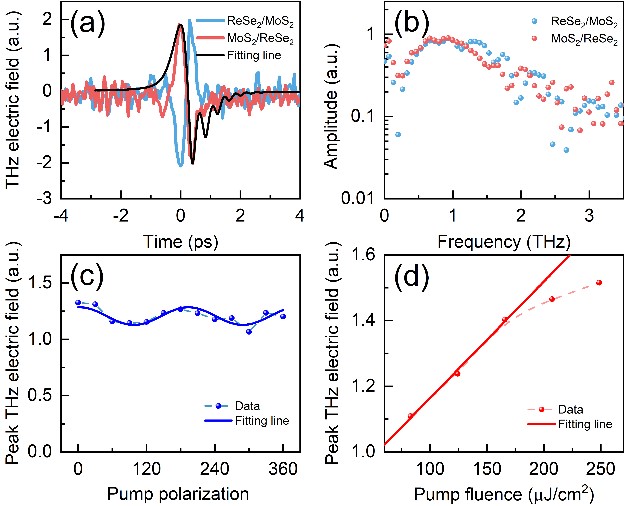
Recently, a collaborated team led by Professor SU Fuhai from Hefei Institutes of Physical Science (HFIPS), Chinese Academy of Sciences (CAS), successfully identified the ultrafast dynamics in monolayer MoS2/ReSe2 heterostructures.
"After studying the ultrafast carrier dynamics of this heterostructure, we identified the relaxation pathways and intermediate processes of carrier transfer, free carrier evolution, and interlayer exciton, etc., within different time scales ranging from sub-picoseconds to hundreds of picoseconds," said YANG Jin, a doctor student who are member of the team.
The construction of van der Waals (vdW) heterostructures, using different two dimensional (2D) transition-metal dichalcogenides (TMDs) films, provides a promising route to tailor the physical properties for individual layers and further extending their application prospects in photoelectric devices. Meanwhile, the understanding of photocarrier dynamics in vdW 2D-TMDs, including different intermediate excitation species and relaxation pathways, plays essential roles for the development of devices. The complete scenario of photocarrier dynamics, especially in the Rhenium dichalcogenides (ReX2, X = S, Se) based 2D-TMDs heterostructures having significances in the polarization sensitive photoelectric devices in near-infrared spectrum, remains elusive so far.
In this research, with large-scale vertically stacked heterostructures fabricated by their collaborators, they investigated photocarriers dynamics via THz emission spectroscopy, time resolved THz spectroscopy and near-infrared optical pump probe spectroscopy, which allowed for the direct probe of out-of-plane charge transfer (CT), in-plane charge transport and interband transition, respectively. Supported by the theory calculations and simulations, the team established the photocarrier dynamics pathway across charge separation, including the initial CT (~170 fs), intermediated evolution from free electron-hole plasma to interlayer excitons (~0.7 ps) and free-carrier trapping (~13 ps), as well as the long-living interexcitons recombination (>394 ps).
The CT tends to pronouncedly increase the transient THz photoconductivity (~2.8 times), nonlinear saturable absorption (~5 times) and interband recombination lifetime (> 10 times) in the heterostructures compared with the isolated ReSe2 monolayer, which is most interesting to them, as it demonstrated the large-range tunability in photocarrier dynamics basing on the heterostructures construction.
This work provides comprehensive insight into the photocarrier dynamics across the charge separation and will help with the development of optoelectronic devices based on ReSe2-MoS2 heterostructures.
The study was supported by National Natural Science Foundation of China, Science Challenge Project, Chinese Academy of Sciences Innovation Grant, Hefei Institutes of Physical Science, Chinese Academy of Sciences (CASHIPS) Director Fund.
The paper has been published in ACS Nano.

Measured THz electric field waveforms emitted from ReSe2/MoS2 and MoS2/ReSe2 heterostructures with 800 nm pump excitation.(image by YANG Jin)

Time-resolved and frequency-resolved THz photoconductivity excited with 800 nm pump pulses in ReSe2 monolayer and MoS2-ReSe2 heterostructures.(image by YANG Jin)